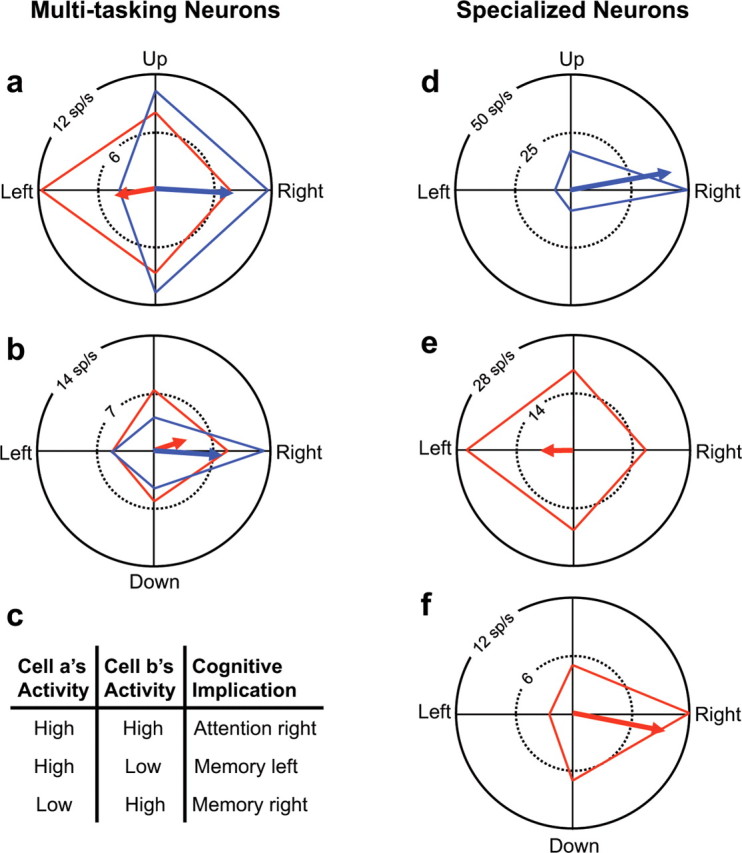Figure 8.

Increased coding efficacy of multitasking neurons. Representing the same information encoded by only two multitasking neurons (a, b) requires three neurons if two or more are specialized for either attention or memory (d–f). As shown in c, together the two multitasking neurons (cell a and cell b) can signal three cognitive states: attention to the right, working memory of the left location, and working memory of the right. For example, maximal activity in cell a could indicate either attention to the right (blue) or memory of the left location (red). The level of activity in cell b, however, disambiguates the signal of cell a. If the activity of cell b is also maximal, then the two cells, together, are signaling attention to the right. Alternatively, if the activity of cell b is low, then cell a must be signaling memory of the left location. Representing the same information requires three specialized neurons (d–f). That is, it would take three cells to signal attention to the right (the contribution of cell d), memory of the left location (cell e), and memory of the right location (cell f). Two of the specialized neurons and one of the multitasking neurons would achieve the same result.
